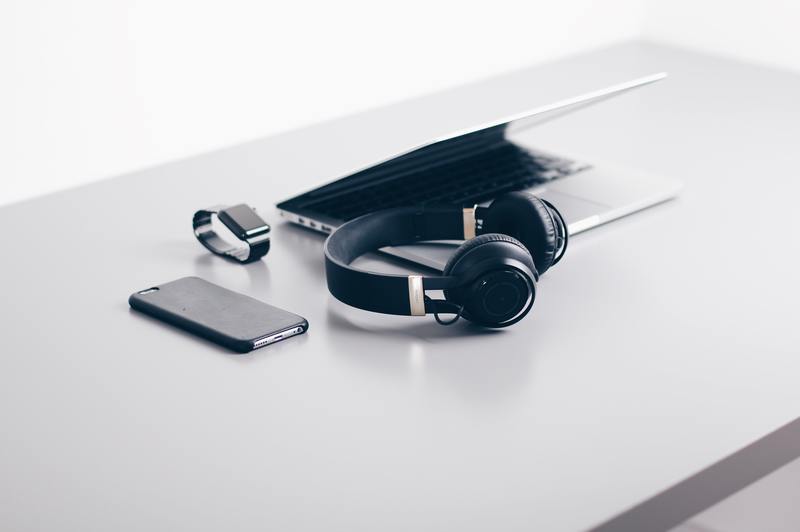Wears caused by water are prevalent; then, have you ever wondered why are electronics damaged by water? Continue reading to know more about your inquiries.

Reasons As To Why Water Causes Damage To Electronics
Distilled water is relatively harmless; however, impure water may ruin electronics with its components. When these tiny components enter electronics, they may upset its internal circuits.
Water is capable of conducting electricity. Once you dropped a powered-on device on the water, numerous terminals inside would come in contact with it; this leads to short-circuiting.
Short-circuiting may cause extreme heating, or if you’re lacking in luck, it can start a fire. Not to mention that after a long period of exposure to water, signs of corrosion might show up, and the device’s metal might become weak and break.
Display screens have a backlight panel that equips luminance; once the water comes in and gets in contact, it might produce a murky appearance or black spots distorting the display. Even the speakers might make hazy and muffled sounds.
Unlike water which takes time to evaporate, alcohol is faster such as ethanol or isopropyl. Other than that, alcohol has a different component than water, which may also be why devices soaked in alcohol had more chances to survive.
Three types of water can cause damage, according to strike check:
- Clean water – This is a type of water damage caused by broken water lines or rainwater. This is the source of the minor damage caused.
- Gray water – This is a type of water damage caused by used water from sinks or tubs. With time, it can turn to black water.
- Black water – This is the damage caused by contaminated water from sewage or floodwater. It contains harmful bacteria that may pose a health risk.
How does water damage your electronics?
Here are some of the several ways that a device can get harmed by water:
- Short-circuiting happens when your device is turned on and in contact with water. It might result in excessive heating and damaging components of a machine.
- Corrosion is not an immediate effect; this may make an appearance after a week or months passed by that one didn’t take action and clean up the tiny particles left.
- As mentioned earlier, LED/LCD or the display is highly likely to be damaged.
- It can bring physical damage to the internal components. Microscopic impurities might still scratch some parts.
- Growing molds or mildew may be the worst-case scenario of neglecting treatment for water-damaged electronics.
In case you want to know more about this damage individually, you may go to this article about why (and how) does water damage your electronics.
What To Do In This Kind Of Situation
The first thing you’ll need to do is assess the damage. Damage can be affected by various factors such as how much water got in, is it resistant to water, or how long it was drenched.
Some newly made devices are created to have more resistance to water, but they would still be affected if soaked for too long. Know if you can do the clean-up by yourself or you would ask for a professional’s assistance.
You might want to know first if it is still doable or if it’ll be better to buy a new one and upgrade.
Here are the steps you may follow if you do drop a device on water:
Step #1. Immediately get it out of the water
Step #2. Turn it off if it’s on.
Step #3. Do not shake it, or the water might penetrate deeper.
Step #4. Dry the outside as much as you can with absorbent towels.
Step #5. Disassemble what you can.
Step #6. Lay the disassembled parts on absorbent towels next to a window with good airflow, then leave it for a while.
Step #7. After it is dry, do tests to know if the device is still functioning. If it’s not, it is best to leave it to the professionals.
Safety precautions that you need to take note of
After seeing your electronics dipped in water, maybe your first reaction was to retrieve them immediately. That should be alright if the electronics are unplugged from an external power source.
It’s best to know how to handle your electronics damaged by water to ensure your safety. Here are some tips you should take note of:
- Be sure that you’re not wet before touching an electronic that is water damaged.
- Determine what caused the damage.
- Dry the exterior using a cotton cloth or paper.
- If the electronics are on, turn them off. It would decrease the risk of short-circuiting.
- Remove batteries if there are.
- Electronics that come in contact with water shouldn’t be plugged in without inspecting their damages.
- Know if what you need is repairing or replacement.
- Choose to leave the repair to the professionals if the problem is enormous.
- You may take note of green or encrusted spots on electronics, be sure to clean them up upon seeing one. Use a cotton swab, dip it in a cleaning solution, then gently rub the affected spots.
Learn more by visiting these two articles regarding how to clean water damaged electronics and what chemical works for water damaged circuit boards.
Conclusion
Water is not suitable for your electronics, so you might want to lessen the risks of this happening by being more cautious. Hopefully, this article concerning why are electronics damaged by water was able to help enlighten you.
